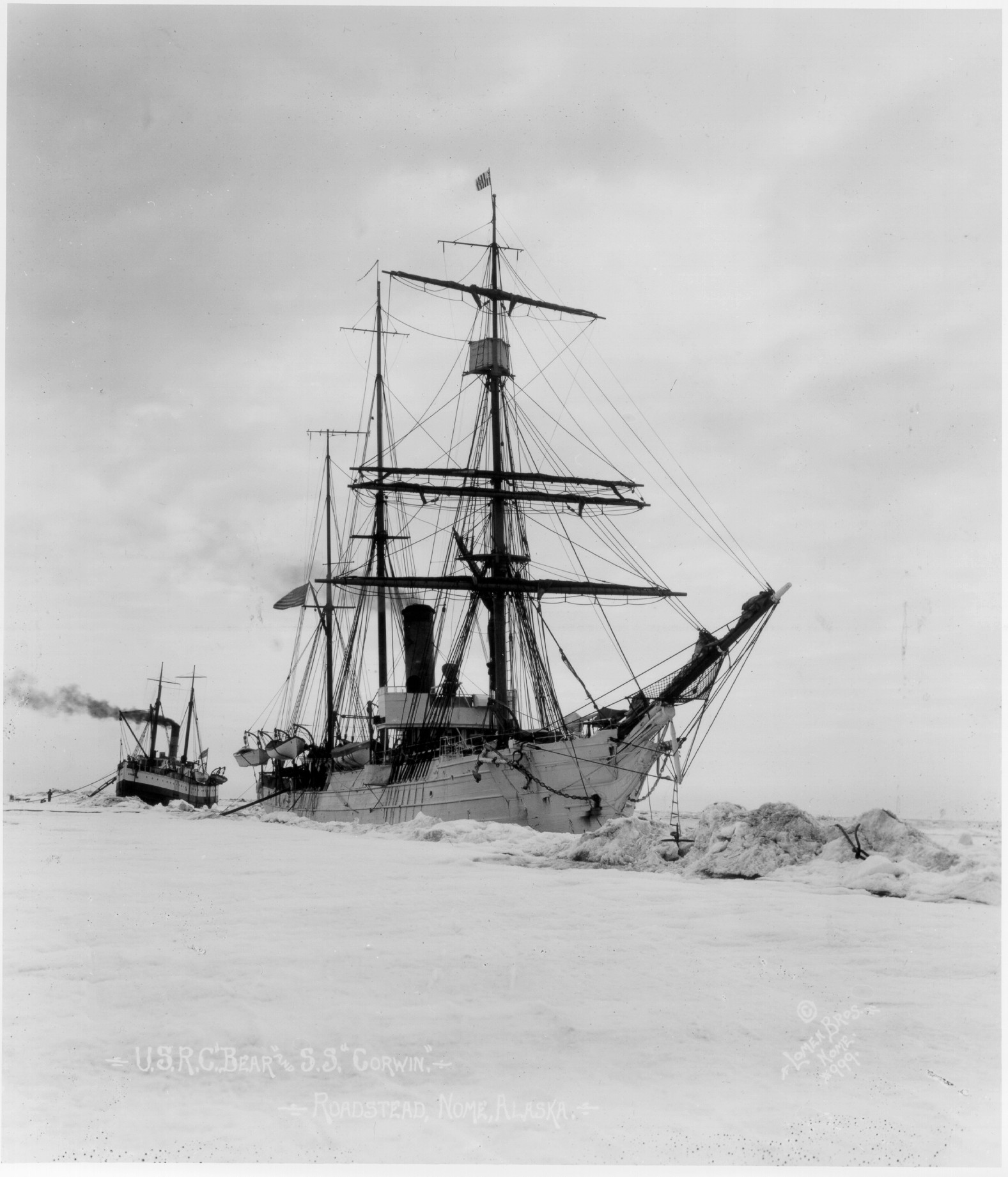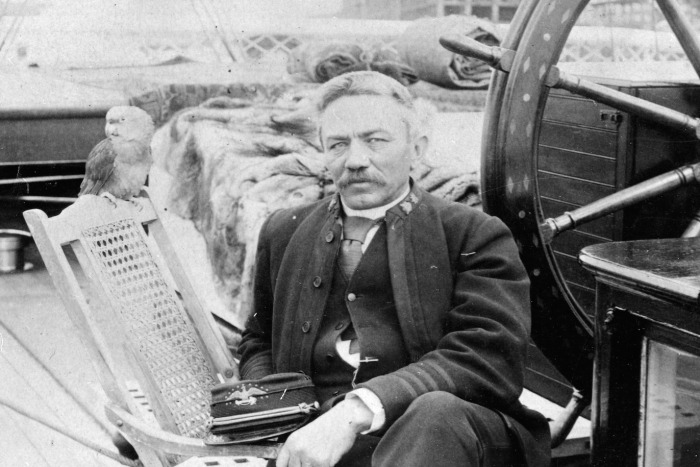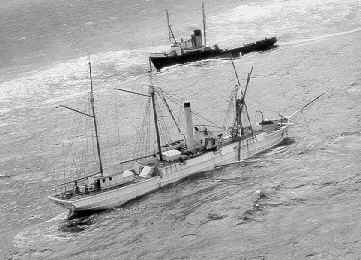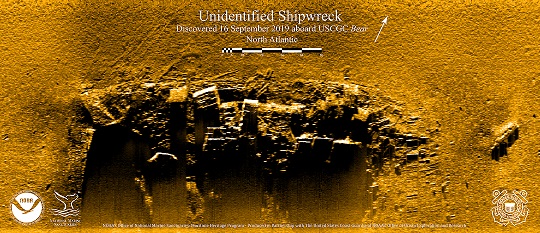As with so many  forgotten Coast Guard stories of heroism, bravery, and courage, the story of Michael Augustine Healy and his trusty cutter Bear is unknown to most Americans.
forgotten Coast Guard stories of heroism, bravery, and courage, the story of Michael Augustine Healy and his trusty cutter Bear is unknown to most Americans.
Healy was born in 1839 on a plantation in Georgia to  a plantation owner and a slave. His father sent Healy north with his siblings so they would escape enslavement in the South and attend what was, at the time, the Holy Cross Boys Academy in Worcester, Mass.
a plantation owner and a slave. His father sent Healy north with his siblings so they would escape enslavement in the South and attend what was, at the time, the Holy Cross Boys Academy in Worcester, Mass.
Healy’s calling was the sea. He enlisted from Boston and received his commission from President Abraham Lincoln in 1865, just a month before Lincoln’s assassination. As such, Healy became the nation’s first African American commissioned officer; first African American officer to command a U.S. vessel of any kind; first African American to achieve every commissioned officer rank from 3rd lieutenant to senior captain (a rank at the time equivalent to today’s flag rank); and first African American to sail the Bering Sea and the Arctic.
Many may have heard of the sheriffs and marshals of the “Old West.” Men such as Wyatt Earp upheld the law in places like Tombstone, Arizona. 
While law enforcement officials of the Old West laid down the law in a town or stretch of land, Captain Healy laid down the law for the Territory of Alaska and the Bering Sea, an expanse of water and land roughly the size of the lower 48 states. Moreover, while sheriffs in the Old West used a horse and gun for law enforcement, Healy commanded an armed U.S. ship, the Bear, which cruised between 20,000 and 30,000 miles in its annual Bering Sea patrols.
Moreover, few know of Alaska’s far more dangerous maritime frontier of the late 1800s. There, Healy made his name contending not only with misfits and criminals, but deadly sub-zero temperatures and ship-sinking ice with a wooden ship and ice resistant technology far less capable than today’s.
Built in 1874 as a steam and sail powered Arctic sealer, Cutter Bear had wooden walls as thick as the USS Constitution’s and an iron bow to find its way through leads in pack ice. During Bear’s 40-year career in Alaska, the cutter performed some of the most daring and successful Artic rescues in history. And, when malnourished Native Alaskans needed food, Bear brought it; when stranded whalers needed rescue, Bear saved them; 100 years ago, when thousands of Alaskan’s contracted the Spanish Flu, Bear brought doctors and medicines; when coastal settlements needed mail from the outside world, Bear delivered it; and, when mutinies broke out on Bering Sea ships, Bear quelled the outbreaks
Bear was retired from Alaskan service after a 40-year career. By that time, the cutter had sailed over one million miles in Alaskan waters, but its career was far from over. In the 1920s and 1930s, Bear became the command ship for polar explorer Richard Byrd’s expeditions to the South Pole, establishing the U.S. base at Little America. Finally, in World War II, at well over 60 years of age, Bear was commissioned a U.S. Navy vessel in Greenland, and helped seize the first enemy vessel of the war.
After the war, Bear was decommissioned and remained in Nova Scotia until 1963, when the cutter was towed to Philadelphia to serve as a waterfront restaurant. During the transit, the ship and tow encountered heavy seas, causing the old wooden vessel’s plank seams to open to the sea. She slowly sank below the waves.
Bear had served in various capacities for nearly 90 years, a remarkable record for a ship built of wood. During her career, Bear had explored, policed, protected, nurtured, defended and helped preserve the Polar Regions and the humans and animals that survive in those forbidding lands.
However, Bear’s story did not end with Bear’s loss in 1963. Instead, a new chapter in the Bear story opened when the search for the historic ship began. In 1979, Massachusetts Institute of Technology’s Dr. Harold Edgerton, inventor of side-scan sonar, launched a search for the Bear near the cutter’s last known coordinates before it left the surface.
 Edgerton was unsuccessful in finding the Bear, but he began a 40-year quest that included not only MIT, but also the Commonwealth of Massachusetts; Canadian Government; U.S. Navy; Woods Hole Oceanographic Institution; Coast Guard District One, Chief Historian’s Office, Research & Development Center, and Coast Guard Academy; and the National Oceanic and Atmospheric Administration.
Edgerton was unsuccessful in finding the Bear, but he began a 40-year quest that included not only MIT, but also the Commonwealth of Massachusetts; Canadian Government; U.S. Navy; Woods Hole Oceanographic Institution; Coast Guard District One, Chief Historian’s Office, Research & Development Center, and Coast Guard Academy; and the National Oceanic and Atmospheric Administration.
In 2019, a team from NOAA Ocean Exploration and NOAA National Marine Sanctuaries’ Maritime Heritage Program, working off the Coast Guard’s medium-endurance Cutter Bear (named for U.S. Revenue Cutter Bear), mapped 62 square miles of seabed. and found two targets for further exploration. Coast Guard and NOAA researchers returned to sea earlier in 2021 on the Coast Guard’s ocean-going buoy tender Sycamore, this time with an advanced remotely operated vehicle (ROV) equipped with high-resolution underwater video cameras. The result was a positive identification of the Bear’s wreck site located 90 miles south of Cape Sable, Nova Scotia. The wreck is too degraded to preserve, however, it may be considered for protection against tampering and further destruction from manmade sources.
Today, with the combined efforts of several state, federal and international partners, Bear’s final resting place has been found and identified. Finally, this legendary cutter is no longer lost and her memory rescued from the depths of history.